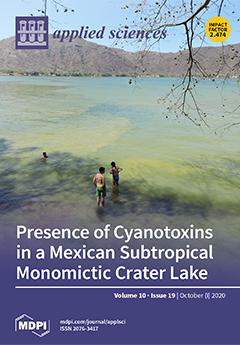In this study, a simplex-centroid mixture design (SCMD) approach was used to select the optimal proportions of three different Melastomataceae leaves species (
M. malabathricum,
M. decemfidum, and
M. hirta) extracts to determine the optimum antioxidant activities of total phenolic
[...] Read more.
In this study, a simplex-centroid mixture design (SCMD) approach was used to select the optimal proportions of three different Melastomataceae leaves species (
M. malabathricum,
M. decemfidum, and
M. hirta) extracts to determine the optimum antioxidant activities of total phenolic compound (TPC) and ABTS (2, 2′-azino-bis (ethylbenzthiazoline-6-sulfonic acid)) radical-scavenging activities. Twelve experimental designs were set up, consisting of points that were equally weighted mixtures of 0 to 1 components, which were pure blends (1, 0, …, 0), binary blends (1/2, 1/2, 0, …, 0), tertiary blends (1/3, 1/3, 1/3, 0, …, 0), and a control point. The in vitro anti-elastase and collagenase activities were evaluated in order to determine the anti-aging efficacy of the optimized mixture extracts. A high-performance liquid chromatography (HPLC) analysis was employed to identify the flavonoid content (rutin and quercetin) present in the optimized mixture extracts. The results showed that the best proportions of the optimum phenolic compounds and ABTS activity corresponded to 30%, 40%, and 30% of
M. malabathricum,
M. hirta, and
M. decemfidum leaf extracts, respectively. The in vitro anti-collagenase and elastase activity evaluation of the optimized mixture extracts showed 70% inhibition against both elastase and collagenase enzymes. The HPLC analysis revealed two flavonoids (rutin and quercetin) at retention time 7.770 and 8.769 min, respectively, in the mixture extracts. This study suggests the potential exploitation of mixtures of Melastomataceae leaves (
M. malabathricum,
M. decemfidum, and
M. hirta) as cosmetic ingredients for antioxidant and anti-wrinkles applications.
Full article





